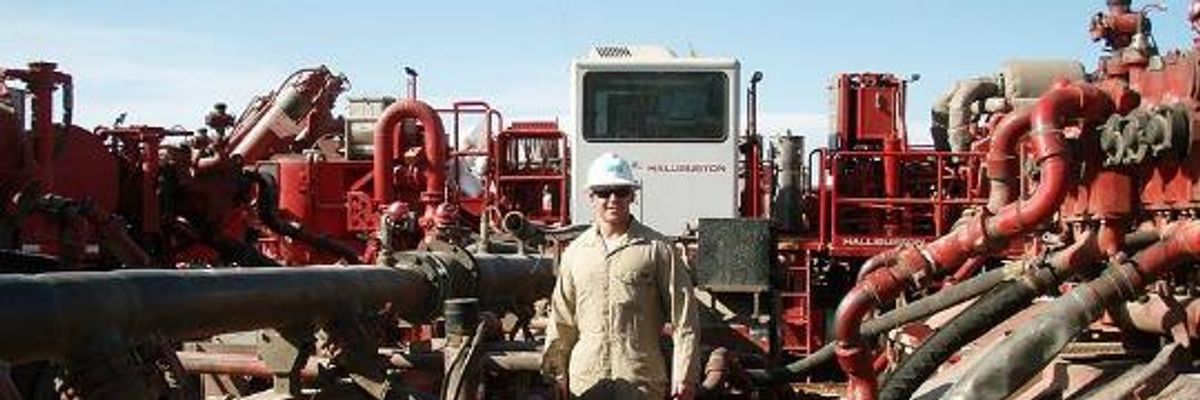Amid soaring concerns about the health and environmental impacts of the U.S. fracking boom, federal regulators are failing to inspect thousands of oil and gas wells they have deemed high-risk, according to the government's own report released Monday.
According to the Government Accountability Office, the Bureau of Land Management--an arm of the Interior Department--did not inspect 2,100 of the 3,702 "high-priority" wells drilled between 2009 and 2012, even though such wells are mandated for inspection according to the bureau's own rules.
Frank Rusco, who oversaw the investigation as Director of Natural Resources and Environment for the GAO, told Common Dreams that such wells are deemed high-priority because "there is the need to protect usable water, or high-pressure zones--zones that contain hydrogen sulfate which could pose a safety hazard if it were to be released."
"This report shows a clear lack of accountability about what's happening on public and tribal lands," Jane Kleeb of environmental group Bold Nebraska told Common Dreams. "We have countless families that describe the pollution happening on their land. What pollution is happening that we don't know about?"
Adding to this lack of oversight, according to Rusco, the BLM's own process for identifying high-risk wells is "flawed" because designations are made locally by engineers who make inconsistent judgements across locations.
Of the wells deemed high-risk under this flawed system, the number slipping through the cracks could be far higher than 2,100. "[O]f the more than 14,000 federal and Indian oil and gas wells drilled from fiscal year 2009 through fiscal year 2012 on lands managed by BLM that we reviewed, BLM's AFMSS database is missing data on whether 1,784 wells were identified as high- or low- priority," states the report.
According to Rusco, GAO investigators were unable to determine how many of these high-priority wells went without an inspection by state or federal regulators. "We know that some wells were inspected by states, but we don't know how many, because we don't have data from states."
For inspections that do occur, the BLM has outdated "rules and guidance governing oil and gas development" and has failed to keep up with "technological advances, such as hydraulic fracturing and horizontal drilling," according to the report.
"The GAO reports findings that high risk oil and gas wells are not being inspected is highly concerning," Emily Wurth, Director of the Water Policy Program for Food and Water Watch, told Common Dreams.
She added, "Our public lands should be protected for future generations, not exploited for the oil and gas industry's gain. That's why we support a ban on fracking on federal lands."
_____________________

